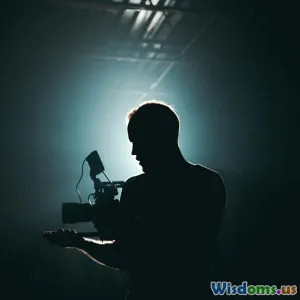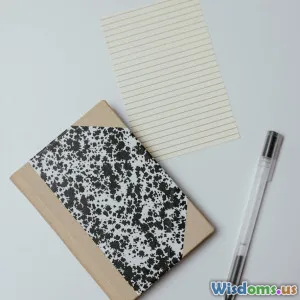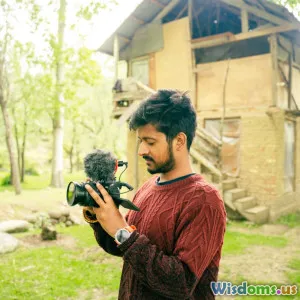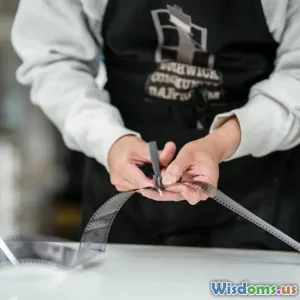
Exploring Digital Art Trends
7 min read Dive into key digital art trends reshaping photography and filmmaking with expert insights and real-world examples. (0 Reviews)
Exploring Digital Art Trends in Photography & Filmmaking
In an era where technology and creativity converge, digital art is redefining how we capture and tell stories through photography and filmmaking. The rise of advanced tools, software, and techniques not only amplifies artistic expression but also transforms workflows, pushing traditional boundaries. Whether you're a seasoned professional or an aspiring creator, understanding these trends is crucial to staying relevant and inspired.
The Fusion of Technology and Art
Digital art in photography and filmmaking is more than just pixels on a screen—it’s a landscape where imagination meets innovation. From hyper-realistic visuals to immersive experiences, contemporary creators harness emerging technologies to craft captivating narratives.
AI-Driven Creativity in Visual Arts
Artificial intelligence (AI) has become a powerful catalyst in redefining digital art. In photography, AI-enabled software like Adobe Photoshop's Neural Filters or Luminar AI allows unprecedented ease in editing by automating complex tasks such as portrait enhancement or background replacement. Cinematographers use AI-assisted pre-visualization to conceptualize scenes, understand lighting dynamics, and optimize setups before shooting.
A landmark example is the use of AI in restoring and colorizing archival footage, giving new life to vintage films with enhanced appeal for modern audiences. According to a 2023 report by Deloitte, 62% of film production companies have integrated AI tools into post-production workflows, highlighting the growing dependence on intelligent automation.
Virtual Production Revolutionizing Filmmaking
Virtual production—an amalgamation of real-time game engines, LED volumes, and motion capture—has transformed filmmaking landscapes since groundbreaking projects like The Mandalorian utilized it in 2020. Instead of traditional green screens, large LED walls display dynamic backgrounds projected in real-time, allowing actors and directors to engage with the environment naturally.
This technology cuts down set construction costs, reduces post-production labor, and accelerates timelines. It’s also gaining traction in photography; some commercial shoots employ LED volumes for customizable backdrops, facilitating striking visuals without physical location constraints.
The Rise of 3D Visualization and CGI
Three-dimensional visualization and computer-generated imagery (CGI) continue to blur the lines between reality and digital fantasy. Photographers integrate 3D elements like digital sculptures or architectural models into shots to achieve impossible compositions, enriching storytelling possibilities.
Filmmakers benefit from ever more sophisticated CGI for creating entire worlds or creatures, as witnessed in Peter Jackson’s The Lord of the Rings trilogy and Chris Nolan’s Interstellar. The democratization of 3D software like Blender offers creatives accessible tools to experiment with, fostering independent innovations outside of big studios.
Immersive Storytelling with AR and VR
Augmented reality (AR) and virtual reality (VR) extend digital art into immersive dimensions. Photographers are creating AR-enhanced galleries where viewers can interact with photograph layers, gaining unique perspectives. VR, meanwhile, enables filmmakers to design 360-degree narratives offering full presence, drawing viewers deeply into story environments.
For instance, the VR film Dear Angelica used hand-painted digital canvases viewed through headsets, showcasing how storytelling can dramatically shift through digital immersion.
Data-Driven Visuals and Interactive Media
Incorporating data visualization and interactivity endows images and films with layers of analytical depth and engagement. Documentarians weave infographics and interactive elements into films for deeper audience understanding. Photojournalists use metadata-driven storytelling to contextualize images dynamically, enhancing impact.
An example is the New York Times’ interactive multimedia features combining headline photos with real-time data feeds on climate change to powerful effect.
Challenges and Ethical Considerations
While digital art trends open new planes of creativity, they also prompt important questions. The reliance on AI raises concerns about authenticity and authorship—if a machine completes significant creative steps, where does human credit lie? Moreover, the proliferation of hyper-realistic CGI and deepfakes complicates distinguishing reality, posing ethical dilemmas in news media and filmmaking.
Creators must balance innovative use of technology with transparency and ethical responsibility to maintain audience trust.
Looking Ahead: Embracing the Future of Digital Art
Adaptability is key in a rapidly evolving digital landscape. Workshops, continuous learning, and joining creative tech communities help artists stay abreast of tools and methodologies. Integrating technologies like AI and VR thoughtfully can unlock new storytelling potentials without compromising originality.
The blend of traditional skills and digital prowess defines the next generation of photography and filmmaking professionals.
Conclusion
Digital art trends are not merely changing how photography and filmmaking are executed; they are fundamentally reshaping creative paradigms. From AI-fueled editing to immersive VR narratives, these advancements empower artists to realize visions previously unattainable.
For anyone passionate about visual storytelling, embracing these trends is more than a choice—it’s an imperative to thrive and innovate in today's dynamic creative industries. By understanding and leveraging these tools thoughtfully, photographers and filmmakers can elevate their craft to astonishing new levels.
References:
- Deloitte AI in Media Survey, 2023
- “Virtual Production in Filmmaking,” Filmmaker Magazine, 2021
- The Mandalorian Virtual Production case study, Industrial Light & Magic
- “Creative Technologies and Ethics,” Journal of Visual Arts, 2022
- New York Times Interactive Multimedia Examples, 2023
Rate the Post
User Reviews
Popular Posts





















